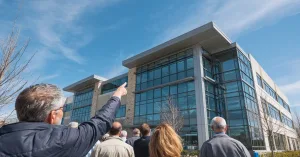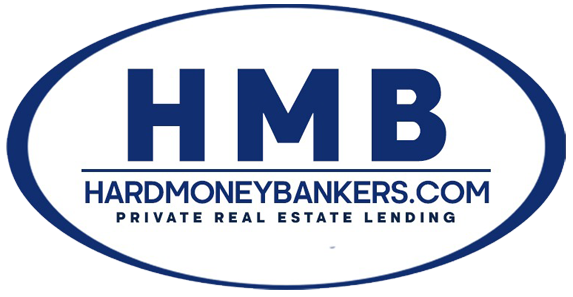After funding over 4,000 deals since 2007, I’ve seen one pattern repeat itself: investors who succeed with commercial hard money loans ALWAYS have their exit mapped out before they sign. The ones who don’t? They end up bleeding cash on 12-15% interest rates while scrambling for solutions.
Here’s the reality. Commercial hard money isn’t like your typical bank loan where you can sit back and make payments for 30 years. These loans are designed to be temporary. Six to twelve months, maybe 24 in some cases. The clock starts ticking the moment you close, and every month costs you serious money.
What You’ll Learn
- Understanding Commercial Hard Money Loans
- Exit Strategy #1: The Refinance Path
- Exit Strategy #2: The Quick Sale
- Exit Strategy #3: Converting to a Long-Term Hold
- Choosing Your Best Exit Strategy
- Maryland Market Specifics
- Common Exit Strategy Mistakes
Understanding Commercial Hard Money Loans
Commercial hard money loans are asset-based financing. Period. Unlike banks that spend months analyzing your tax returns and credit scores, I’m looking at one thing primarily: the property’s value and your plan to improve it. These loans typically run 10-15% interest with terms of 6-12 months.
Why would anyone pay those rates? Speed and flexibility. I can close a commercial deal in under a week when the title work is ready. I’ve even closed deals in 24 hours when all the pieces lined up perfectly. Try getting that from a traditional bank.
The high cost isn’t a bug – it’s a feature. It forces you to move fast and execute your business plan. You can’t afford to sit on a property paying 12% interest. This pressure creates discipline.
Exit Strategy #1: The Refinance Path

Refinancing into conventional financing is the most common exit I see, and often the smartest. You use my money to buy and fix up a distressed commercial property. Once it’s stabilized with tenants and steady income, you refinance into a long-term loan at 6-7% interest.
The math is compelling. A $500,000 hard money loan at 12% costs you about $5,000 monthly in interest-only payments. Refinance that same amount at 7% on a 25-year amortization, and your payment drops to around $3,535. That’s $1,465 per month back in your pocket.
But here’s what you need to make this work. First, the property must be fully stabilized. That means all major repairs completed, decent occupancy (usually 80% or better), and at least three to six months of proven rent rolls. Second, your personal finances need to be in order. Banks want to see 700+ credit scores, two years of tax returns, and enough cash reserves to cover six months of expenses.
I’ve seen investors successfully execute this strategy hundreds of times. One recent borrower took a vacant strip mall in Baltimore County, used our funds to renovate and lease it up to 90% occupancy, then refinanced into a 6.5% conventional loan after eight months. They pulled out $150,000 in cash on the refinance to fund their next project.
If you’re looking to execute a refinance strategy, apply for your commercial hard money loan here. No cost, no obligation to see what’s possible.
Exit Strategy #2: The Quick Sale
The fix-and-flip model works in commercial real estate, but it’s trickier than residential. Commercial properties can take months or even years to sell, while you’re burning through 10-15% annual interest. Every month on the market eats directly into your profit.
I funded a deal last year where an investor bought a small office building for $400,000, put in $100,000 of work, and sold it for $700,000. Sounds great, right? But it took them 11 months to sell. Between interest payments, holding costs, and selling expenses, their net profit was only about $75,000. Still decent money, but not the home run they expected.
The key to a successful sale exit? Know your market cold. Industrial properties in Baltimore are moving fast right now with vacancy under 8%. Multifamily is even better with strong renter demand. But suburban office space? That’s sitting with 20% vacancy rates. You could be holding that property for a LONG time.
Don’t forget the transaction costs either. Figure 5-6% for real estate commissions, 0.5% for Maryland state transfer tax, plus local transfer taxes (Baltimore City adds another 1.5%). Title fees, attorney costs, and other closing expenses can easily push your total selling costs to 8-10% of the sale price.
Exit Strategy #3: Converting to a Long-Term Hold
Sometimes the best exit is no exit at all. You refinance the hard money loan into permanent financing and keep the property as a long-term investment. But let me be clear: you CANNOT hold a property long-term on hard money rates. The math doesn’t work.
The path here is refinancing first (like strategy #1), then operating the property for cash flow. I’ve watched investors build serious wealth this way. They use hard money to acquire distressed assets at good prices, fix them up, refinance into conventional loans, then collect rent checks for years.
Budget carefully for ongoing expenses though. Property management runs 3-12% of gross rents. Maintenance typically costs about 1% of the property value annually, or $1.50-2.50 per square foot depending on property type. Insurance, taxes, and capital reserves add more.
A multifamily building in Baltimore City makes sense for this strategy right now. Vacancy rates are dropping, renter demand is strong, and there’s limited new construction. But that same strategy with a suburban office building? You’re looking at 20% vacancy and declining rents. Choose your asset and location carefully.
Choosing Your Best Exit Strategy
Your exit strategy should be determined before you ever apply for the loan. Not after. Not during. Before.
Here’s my framework for choosing:
Choose refinancing when: You have a solid property that just needs work and stabilization. You’ve got decent credit and can qualify for conventional financing. The property will generate enough income to support long-term debt. This is your lowest-risk option if executed properly.
Choose selling when: You’re in a hot market where similar properties are moving quickly. The profit margin is large enough to absorb 8-10% in transaction costs plus your holding costs. You’ve got backup capital if the sale takes longer than expected.
Choose long-term hold when: The property will generate strong cash flow after refinancing. You’re in a stable or improving market. You have the resources and temperament to be a landlord. You’re building wealth, not just chasing quick profits.
Need financing for any of these strategies? Get pre-approved for your hard money loan today. We can typically give you an answer within 24 hours.
Maryland Market Specifics
Maryland’s commercial real estate market isn’t uniform. What works in Baltimore City might fail in Montgomery County. Based on recent deals I’ve funded, here’s what I’m seeing:
Baltimore Industrial: This market remains tight with about 7.5% vacancy and rents near $8 per square foot. Properties are moving when priced right. I funded three warehouse deals in the last quarter that all successfully refinanced within 9 months.
Baltimore Multifamily: Probably the strongest sector right now. Vacancy dropped 80 basis points recently with strong renter demand and limited new supply. If you’re buying multifamily in Baltimore City or County, you’ve got multiple good exit options.
Suburban Office: Proceed with extreme caution. We’re seeing 20% vacancy rates and declining rents. Unless you’ve got a very specific angle or a below-market purchase price, office properties are challenging. I’m funding very few office deals right now, and only with experienced operators who have proven exit strategies.
Remember Maryland’s transfer taxes when calculating your sale proceeds. The state takes 0.5%, but localities add more. Baltimore City is 1.5%, making your total 2% right off the top. Howard County is 1.25%, Anne Arundel is 1%.
Common Exit Strategy Mistakes
After being involved in thousands of deals, I see the same mistakes repeatedly. The biggest one? Having only one exit strategy. Markets change, buyers disappear, refinancing gets denied. You need a Plan B, and probably a Plan C.
Another killer is underestimating timeline and costs. That 6-month project becomes 9 months. The $50,000 renovation becomes $75,000. Your 3-month sale becomes 6 months. Build in buffers or you’ll find yourself in trouble fast.
Low appraisals sink more refinances than anything else. You think the property’s worth $1 million after renovation, but the appraiser says $850,000. Now you can’t get enough from the conventional loan to pay off the hard money. Always be conservative with your ARV projections.
Some investors try to hold properties long-term on hard money rates, thinking they’ll refinance “eventually.” Don’t do this. Every month you delay costs serious money. If you can’t refinance within 12 months maximum, you need to sell or bring in a partner.

The Bottom Line
Commercial hard money loans are tools, not solutions. They’re the bridge between where a property is today and where you’ll take it tomorrow. But that bridge has a toll – a expensive one – so you better know exactly where you’re going and how fast you can get there.
The successful investors I work with treat their exit strategy as importantly as their acquisition strategy. They run multiple scenarios, have backup plans, and aren’t afraid to pivot when markets shift. They also work with lenders who understand the full cycle, not just the initial loan.
Remember, hard money is about speed and opportunity. I can close your commercial deal in days, not months. But that speed comes with responsibility. You need a clear plan, realistic timelines, and enough capital to handle surprises.
Ready to put your exit strategy into action? Start your application here and let’s discuss your commercial project. With over 17 years in this business, I’ve probably seen a deal like yours before. Let’s make sure you’re set up for success from day one.
Disclaimer: This article is for informational purposes only. Real estate investing involves risk. Always do your own due diligence and consult with qualified professionals before making investment decisions. Past performance doesn’t guarantee future results.
For more insights on commercial real estate financing, check out our discussion on commercial hard money loan fundamentals and the latest Baltimore market reports from Newmark. If you’re specifically interested in refinancing strategies, this guide on converting hard money to conventional loans provides additional technical details.


